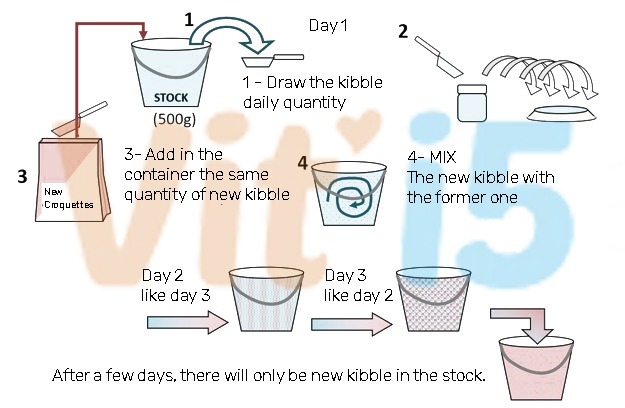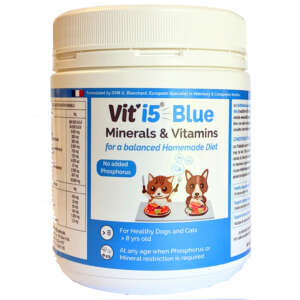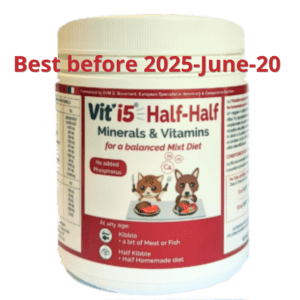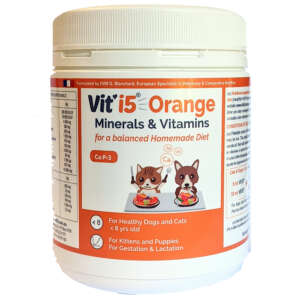News

Food transition in cats
Food transition in cats is a sensitive topic.
Above all, any change in the type of food, ingredient, or food (even within the same brand!) is a food transition.
What are the benefits of a food transition?
– Gradually adapt the intestinal flora and limit digestive disorders that can come along a too sudden change (gas, even diarrhea) because a cat’s digestive tract is used to the composition of its daily diet.
– Then, to allow the cat some time to accept a new ingredient or new food because, due to its neophobic nature, it does not like change, and is wary of new things. Therefore, it can test the first time, and then refuse for a few days a new ingredient or a new food, giving you with the impression it doesn’t like it … It is not necessarily the case: your cat is suspicious in nature.
Therefore, a cat being neophobic, with a sudden change in diet, it can become totally anorexic.
In other words, it can starve itself in front of a full bowl.
No need to tell yourself “if it is hungry, it will eat” … so you might as well proceed with caution …
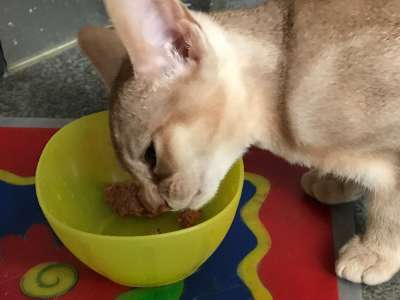
Be progressive
First, offer a small amount of the new food once a day, and continue until it is accepted two days in a row. Then, double the suggested quantity, and decrease the quantity of the usual food … until completely replaced.
Be patient
Cats are neophobic, be patient… Cats are worried about new (food) experience.
Therefore, even with a slow progressive transition, it may take 1 to 3 weeks for a cat to fully accept a new food, that’s okay.
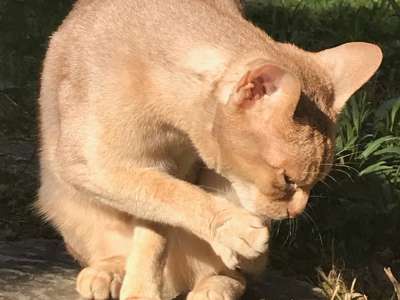
In practise, how to do food transition in cats?
Basically, this means mixing a little of the new food with the old one at each meal. But in cats, this technique can prove to be very insufficient, and some cats do not consume the new food or the new ingredient …
So you have to be cunning …
** When it comes to changing wet food:
starting a homemade diet or adding a new food, or a new ingredient such as zucchini to the usual diet:
To begin, offer every day, once a day, a small quantity of new food (a quantity of the order of a teaspoon, or a few dices of zucchini, or a green bean cut into small pieces of 5mm long),
> Then, renew this proposal every day, until this small quantity is accepted, and consumed a few consecutive days
> After this, double this quantity, and give this restricted quantity several days in a row, until it is well accepted and consumed each day …
If a homemade diet is initiated
To spare time at the begining:
First, prepare a recipe, with the quantity for one day, but without any source of carbohydrates (rice/oat flakes…).
Second, freeze the preparation in an ice cube tray, so as to thaw a “food cube” in the refrigerator, each day for the day after
> This small amount will be made available once a day with the usual wet food
> After a few days, your cat shall try and eat this small amount every day
> After that, but only when the small quantity is willingly consumed for several days in a row, increase the quantity dispensed
> Reduce the amount of usual food whenever a quarter to a third of the theoretical daily amount is well consumed
> In conclusion: a food transition in cats can take 1 to 3 weeks
> When it comes to replacing a wet food with another, gradually reduce the quantity of the usual food as it tolerates the new one.
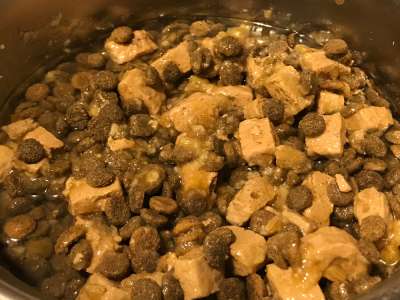
** Food transition in cats : changing the kibble
>First, take a small stock of old kibble (for example 500 grams) and draw from this stock the quantity needed for the day, which will be distributed in several small meals
> After that, add the same quantity of new kibble to this small stock, and mix well
> The next day, take the quantity for the day in this stock mixed with a very small quantity of new kibble,
> Add the same amount of new kibble to the remaining stock, and mix well
After a few weeks, the transition will have been done smoothly
Tips and tricks for food transition in cats
Here are some quick tips to make the food transition easier for cats to accept a new food or diet:
– Add (dilueted in water) tuna juice, or a few drops of soy sauce, or a salted broth. You can also add a spoon of plain yogurt or a pinch of grated cheese.
– You can also vary the temperature (some like to eat warm some cold) and the textures for homemade diet: some prefer mince some cubes, some raw meat (cook only to kill bacteria, 70°C for a few mminutes), others mashed (then mix all ingredients accordingly)…
– As it is a homeparepared diet, never start with only meat or fish or a few ingredients, but WAIT until you have all the ingredients cited in the recipe and combine Vit’i5 and Canola Oil well, then add wheat bran/cooked vegetables (cut tiny cubes), mix and then add meat or fish, and eventually cooked starch if in the recipe). Wait at least 30 minutes to ensure a better partition of taste, and distribute the whole preparation.
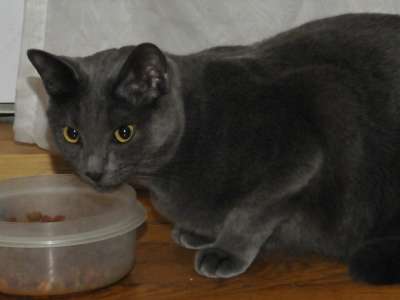
Canola oil, if it is oxidized before being mixed with the other ingredients, can cause the cat to refuse the consumption of the whole food preparation.
Choose well light and oxidation protected canola oil bottle and keep it in the refrigerator.
Do not heat canola oil, neither in a pan or in the microwave.
Is Canola oil toxic? NO!
Canola is a special name for rapeseed selected to contain no erucic acid…
It is a very interesting oil as it contains omega 6 and omega 3 essential fatty acids in an interesting ratio of 2.5:1
There is a common confusion between what is heard for human requirements and pets requirements. In a homemade diet, essential fatty acids are brought by the meat for arachidonic acid (omega 6 essential fatty acid to cats), canola or soybeen oil for linoleic acid (omega 6) and alpha-linolenic acid (omega 3), and fish oil (when necessary) for EPA and DHA (long chan omega 3 fatty acids).
Be careful to not stick to the feeding of cats and dogs what you can hear in nutrition for people, that may not apply the same!
Omega 6 and Omega 3 fatty acids are polyunsaturated, and so, very sensitive to oxidation. If oxidized, fatty acids are not any more useful to the body, they make the food loose palatability and, if consumed may even be inducing digestive or skin reactions.
So Canola oil must not be heated neither use for cooking, and the bottle must be maintained in the fridge (the oil will not freeze), for good preservation.
more information here
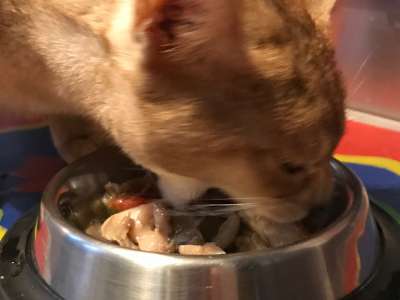
And how do I know my cat is well fed ?
Read our whole article on hints to figure out if your cat is in perfect health.

